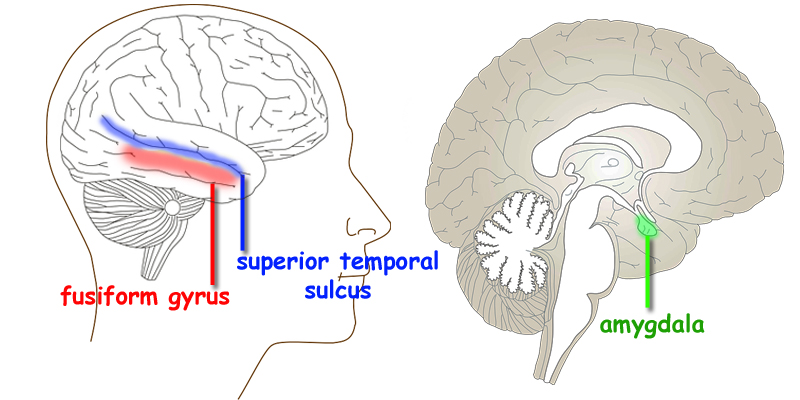How Does Our Brain Process Nonverbal Communication?
When we talk to someone, we gauge their meaning not just from their words, but also from their facial expressions, eye gaze, body language, and gestures. These nonverbal aspects help convey the “tone” of the conversation.
The Social Advantage of Nonverbal Communication
When either the tone or the nonverbal aspects are not present or are incorrectly interpreted, the emotional meaning of the words can be lost, leading to an inappropriate response by the listener. Probably everyone has misinterpreted an email or text message because of the lack of information about the tone. If communication is consistently misinterpreted, the ability to initiate or maintain a social relationship is harmed.
Brain Areas That Process Nonverbal Cues
Recent brain imaging studies have shown that nonverbal communication is processed in different parts of the brain than verbal information[1] [2].

Left: side view of a human brain showing the location of the superior temporal sulcus (blue) and the fusiform gyrus (red). A sulcus is the name given to grooves in the brain, while a gyrus is the bump between the grooves. Right: Side view of the brain sliced in half, highlighting the amygdala (green).
- The amygdala detects varying intensities of social information; it also evaluates trustworthiness[3].
- the cells in the superior temporal sulcus are activated when others show emotion, or when we show the same emotion. [See “The Social Brain” to learn about these brain cells, called mirror neurons.]
- The fusiform gyrus helps to recognize faces. This allows children to pick out other humans from and early age.
References
[1] Kuzmanovic B, Bente G, von Cramon DY, Schilback L, Tittgemeyer M, Vogeley K (2012). “Imaging first impressions: Distinct neural processing of verbal and nonverbal social information.” NeuroImage 60: 179-188.
[2] Zaki J, Hennigan K, Weber J, Ochsner KN (2010). “Social cognitive conflict resolution: contributions of domain-general and domain-specific neural systems. J. Neurosci 30: 8481-8488.
[3] Kuzmanovic B, Bente G, von Cramon DY, Schilback L, Tittgemeyer M, Vogeley K (2012). “Imaging first impressions: Distinct neural processing of verbal and nonverbal social information.” NeuroImage 60: 179-188.

